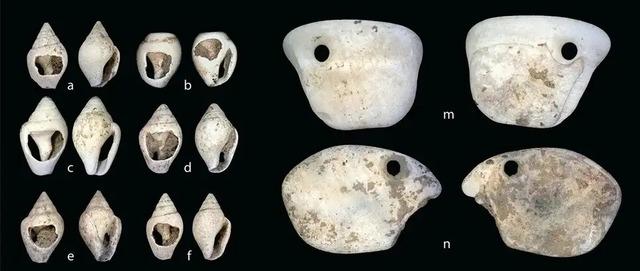A team of archaeologists led by Jamie Hodgkins discovered a cave in northwestern Italy. Investigating 10,000-year-old infant graves. DNA analysis revealed that the infant had been carefully buried after death. (JAMIE HODGKINS, PHD, CU DENVER)

The bones of a young child were found in a cave in Italy, and as a result of analysis, it became clear that it was the oldest baby girl buried in Europe. It could provide clues about what kind of existence babies were in ancient societies, and how the "personality" of baby girls was treated in particular. The paper was published in the academic journal Scientific Reports on December 14. Gallery: Ancient people looked like this, archaeologists reconstructed them in ultra-realistic 9 photos The girl was named "Neve" after the name of the river that flows through this area. Died just over 10,000 years ago, just 40 to 50 days old. The cause of death was unknown, and all that was found was a few small bones and shell beads wrapped in cloth. The talons of an eagle owl unearthed nearby are thought to have been placed as offerings. The bones of ancient children are rarely found. Even more so when it comes to the bones of a newborn. Children's bones are too small and fragile to keep their shape for thousands of years. In addition, even when children's remains are found, the DNA in the bones is so degraded that it is usually impossible to determine the sex. Neve's remains were an exception. Buried in the ground for more than 10,000 years, it contained enough DNA to be analyzed. "There are very few graves from this age, 11,000 to 10,000 years ago." And when it's this old, there are very few bones with usable DNA left. "It's a blank period of almost nothing," says lead author Jamie Hodgkins, an associate professor of paleoanthropology and archaeology at the University of Colorado Denver. He is also a National Geographic Explorer.
It is important that the DNA remains. Thanks to that, Neve turned out to be a girl. Ethnographically, many cultures do not fully recognize the humanity of young children. But the respectful burial suggests that baby girls, and perhaps baby boys, had a 'personality' within this cohort and were recognized as members of society from birth, researchers say. we point out. "It shows that even a little baby girl was accepted as a person in society," says study co-author and Hodgkins' husband paleo-human at the University of Colorado Denver. Scholar Cary Orr. Since few ancient child remains have ever been found, it is difficult to know when babies were considered individuals and whether girls were treated the same as boys. But Michael Petraglia of the Max Planck Institute for the History of Human Sciences in Jena, Germany, also thinks the researchers' interpretation is plausible. "I think it's evidence that boys and girls were treated equally," he says. Petraglia, who was not involved in the new study, has studied the remains of children even older than Neve in Africa. This one was buried 78,000 years ago, long before humans reached Europe. A grave of an infant from the same period as Neve was also found in Tanana Valley, Alaska, USA. She died about 11,500 years ago, about the same age as Neve, and DNA analysis has confirmed that she was a girl. And this one was also carefully buried, and the offerings were placed in the same way. Mr. Hodgkins and Mr. Orr wrote about this in their paper as follows. "It shows that the idea of infants, including girls, as a person would have been deeply rooted in all ancient cultures. It must have happened."
Next page: The Overlooked 'Women's Story' Final Update: National Geographic Japan Edition